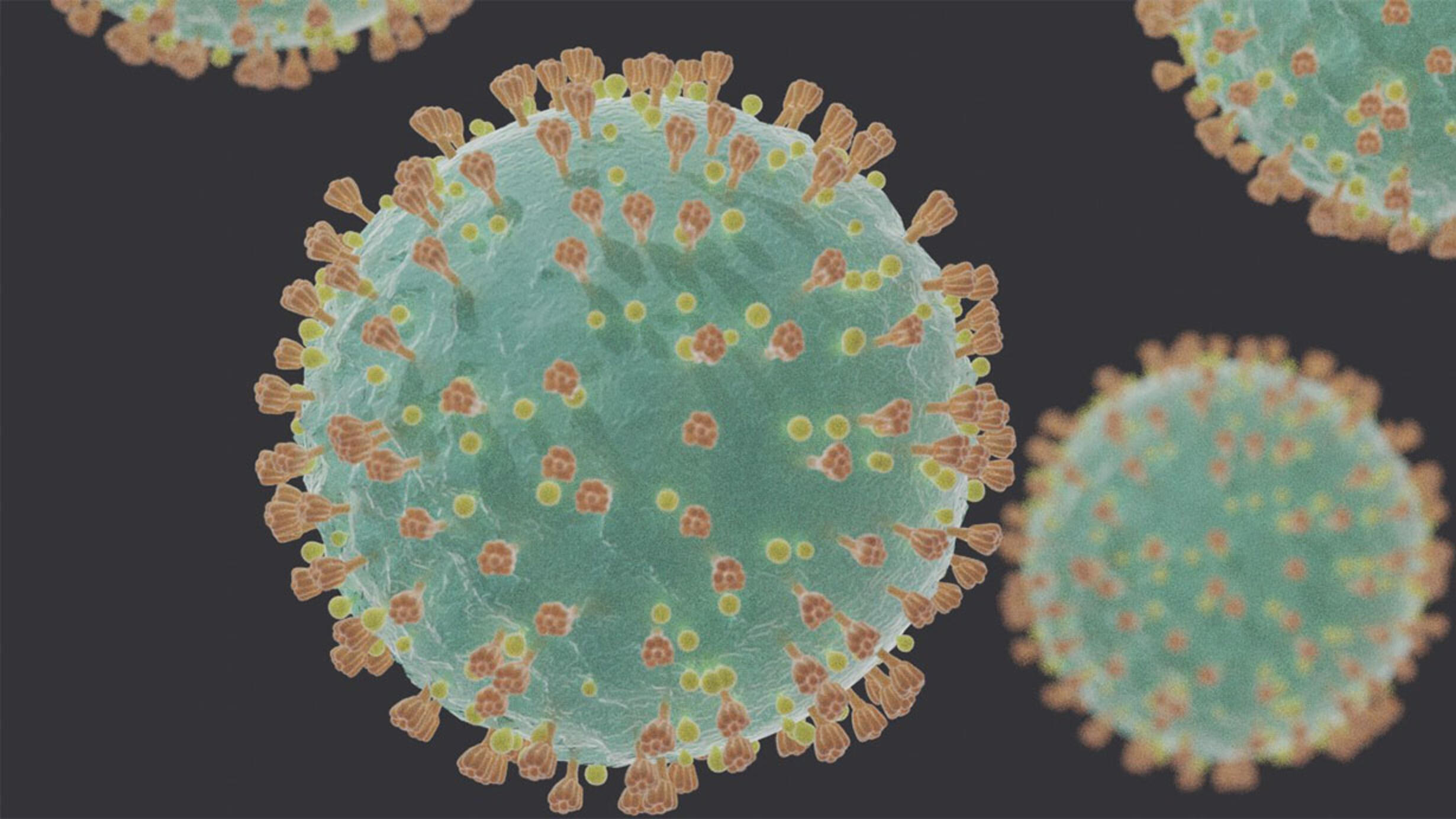 This image (above) shows a computer-generated representation of COVID-19 virions (SARS-CoV-2) under an electron microscope.
This image (above) shows a computer-generated representation of COVID-19 virions (SARS-CoV-2) under an electron microscope.A new study led by researchers at the Museum and Stonehill College examines whether the prevalence of COVID-19 in particular areas might be linked to climate. The research was shared on the MedRvix pre-print server, an online repository for data that are not yet peer-reviewed and are subject to revision by the authors.
Climate and seasonality influence the global distribution and incidence of many diseases, including coronaviruses, and recent preliminary research by multiple groups has suggested a link between COVID-19 and cool weather. Climate is the typical weather in a particular region over many years. Previous work in this vein has leaned on species distribution modeling, which uses environmental data (such as temperature and precipitation) to predict where populations of a given organism are likely to live. It is often used to study questions concerning invasive species, climate change, diseases, and speciation.
“We are used to applying this kind of modeling to questions of ecology and evolution,” said Rob Harbert, an assistant professor at Stonehill College and former Museum postdoc. “Building accurate and careful models for a virus during such a dynamic outbreak has been particularly challenging.”
One other important variable is that the habitat preferences of the virus’s host—humans—could be overlooked. In other words, there might be more cases of COVID-19 in places like New York City, Washington, DC, and Seattle not because they experience colder climates, but because more people live there, resulting in higher numbers of potential hosts for the disease.
“It’s really important when modeling this virus to include the host component,” said Seth Cunningham, a visiting scientist at the Museum. “As COVID-19 is primarily passed via human-to-human contact, the affects of climate on its distribution may be limited.”
To better examine a possible link between climate and COVID-19, the researchers modeled county-level data from the United States in the context of human population density. Overall, the models indicate that climate may not play a large role in current U.S. viral distribution and that human population density could be a primary driver. However, the study cannot rule out that climate is at least a partial driver of COVID-19 distribution globally.
“So far in the U.S., it looks like when people are around, the virus is around,” said Museum postdoctoral fellow Michael Tessler. “Still, we cannot factor out weather in the long term, as our data show a modest tendency for more per capita virus cases in cooler areas of the country.”
The researchers suggest that climate and viral prevalence continue to be examined and cautiously interpreted, as new data may change these findings. They also recommend that human-focused data should be compared to, or incorporated into, modeling exercises more generally going forward.